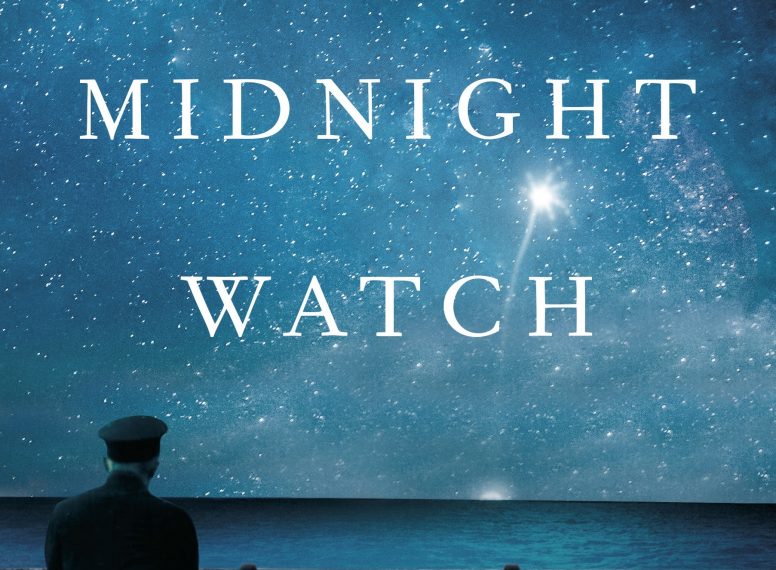
It has just gone midnight on April 15 1912, and Herbert Stone — second officer aboard the SS Californian — is about to take watch. Across the Atlantic ice field that has halted his own ship’s progress for the night lies another, a passenger steamer, her lights dim. Stone is expecting a quiet night, but when a white rocket emerges from the darkened ship, followed by seven more, the sparks from their trails lingering in the night sky, he calls upon his captain for advice. They’re distress signals, undoubtedly, but the distant ship isn’t responding to his morse lamp messages. Captain Lord, “Lord of the Californian,” does nothing.
Over the next few days, the news begins to trickle in, first a drizzle, then a storm, then a deluge. The ship Stone saw that night was the Titanic, more than 1500 lives were lost, and the Californian was the nearest vessel to her. Yet despite eight distress rockets, the tramp steamer didn’t come to her aid. In fact, she barely investigated at all. Why? Boston American reporter John Steadman is desperate to find out.
That’s the premise behind David Dyer’s debut novel, The Midnight Watch, based on the true events of that fateful April night and beyond. Drawing on both his personal experience as a ship’s officer, as well as extensive historical research, Dyer has crafted an impressive story, mixing historical fact and fiction to create a tale fraught with tension, frustration, and tragedy.
At the centre of the novel is Steadman, Dyer’s own creation, surrounded by a cast of (mostly) historical figures. Steadman’s angle is to “follow the bodies,” writing stories for the Boston American that offer a final breath of life to the unjustly deceased, from the young women who died in the Triangle Shirt Factory Fire, to (in the post-Californian years) the soldiers of World War One. The stories of survival and heroism that emerge in the aftermath of the Titanic’s sinking are not for him, but despite being ordered to do as he does best and follow the bodies fished from the sea, Steadman sniffs out a different story — that of the Californian and her crew, who might have been able to save them all.
Steadman is a fascinating and more than capable lead, and Dyer is adept at sharing his frustration at every obstacle placed in his way. From Captain Lord’s sweeping denials of what actually occurred, to Second Officer Stone’s inability to speak for himself, to other papers beating him to the punch. It’s difficult not to get caught up in the journey, to root for the truth to come out and for Steadman to be the one that reveals it.
But as the story progresses — and as Steadman’s vision for his own scoop changes —the real core of the novel begins to show itself. The Midnight Watch is not necessarily a story about right and wrong (though Dyer does share the general, historical opinion that the Californian was in the wrong), nor is it about redemption, or even justice.
It’s more about the thin line between what we believe to be true and what is actually true. What we want to be real, and what we actually end up with. Lord stuck steadfastly to his version of events until the end of his life, despite the findings of both an American and a British inquiry into the incident. Stone, desperate to be the Starbuck to Lord’s Ahab, stood by his captain; a quiet, timid figure who would rather follow Lord into disrepute than speak out and go it alone, despite his own crippling guilt. Steadman, in the middle of it all, trying in vain to get the confessions he needs for his damning exposé, but finding out that following the bodies and giving a voice to the voiceless is ultimately more important than the sensational story he will travel the world to find.
The Midnight Watch is a compelling look at a story that seems to have been lost in more recent retellings of the infamous disaster. A clever weaving of nautical knowledge, historical research, and beautifully crafted creative writing, Dyer brings it all together to form a novel that is both rich in detail, as well as emotion. This offers twists and turns as exciting and frustrating as any fictional psychological thriller.
Watch out in particular for Steadman’s publication, with dialogue lifted directly from actual inquiry records interspersed with his versions of events that night, aboard both the Californian and the Titanic, the latter as seen through the eyes of nineteen year old (and actual victim) Stella Sage. Used here to form just part of an excellent final product, this section is strong enough to stand alone, almost giving the reader two books for the price of one.
David Dyer’s The Midnight Watch is published by Penguin Books and is available now.
Find out more about the author and the novel at David Dyer’s website.
———-
